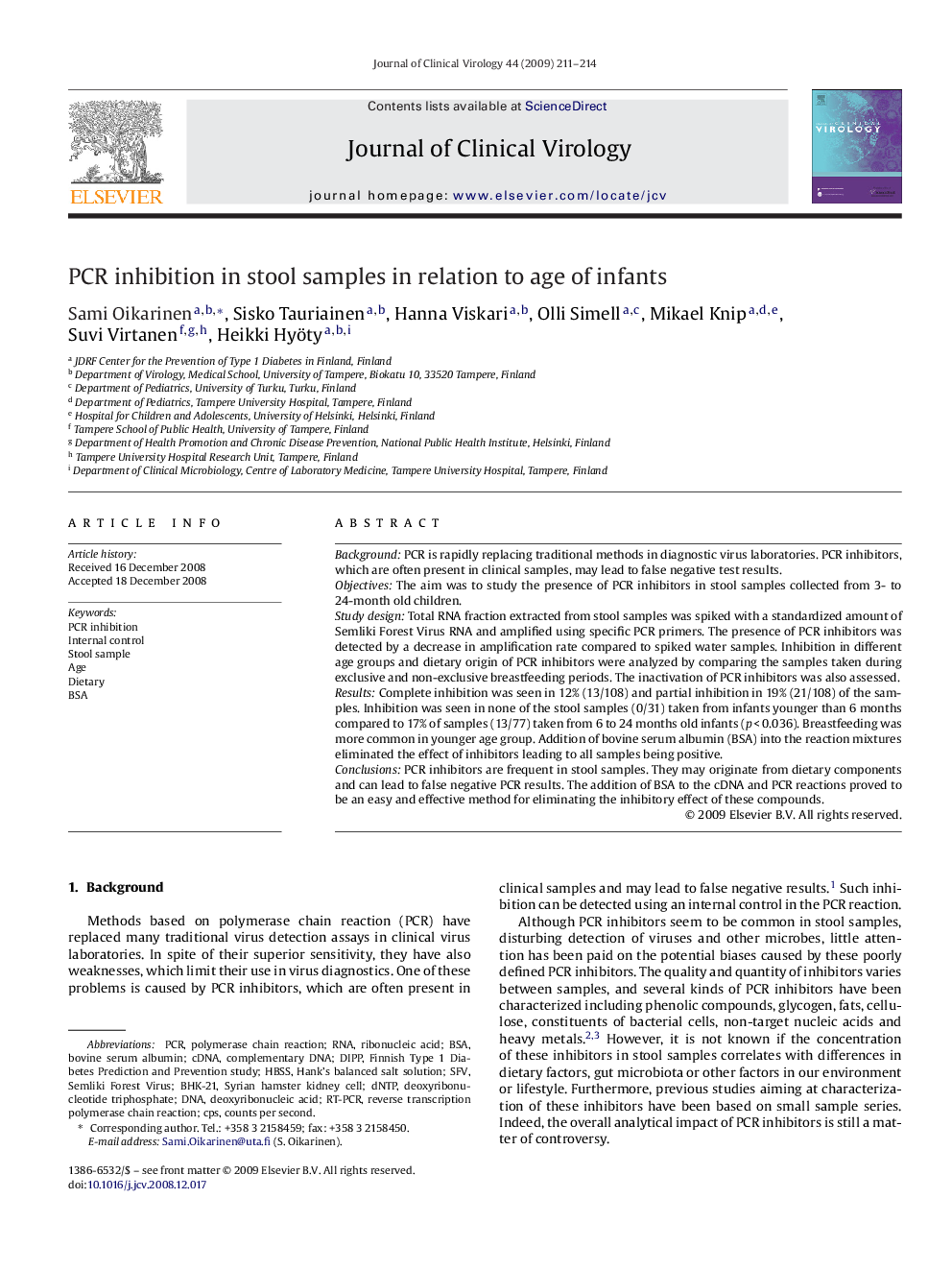| Article ID | Journal | Published Year | Pages | File Type |
|---|---|---|---|---|
| 3370571 | Journal of Clinical Virology | 2009 | 4 Pages |
BackgroundPCR is rapidly replacing traditional methods in diagnostic virus laboratories. PCR inhibitors, which are often present in clinical samples, may lead to false negative test results.ObjectivesThe aim was to study the presence of PCR inhibitors in stool samples collected from 3- to 24-month old children.Study designTotal RNA fraction extracted from stool samples was spiked with a standardized amount of Semliki Forest Virus RNA and amplified using specific PCR primers. The presence of PCR inhibitors was detected by a decrease in amplification rate compared to spiked water samples. Inhibition in different age groups and dietary origin of PCR inhibitors were analyzed by comparing the samples taken during exclusive and non-exclusive breastfeeding periods. The inactivation of PCR inhibitors was also assessed.ResultsComplete inhibition was seen in 12% (13/108) and partial inhibition in 19% (21/108) of the samples. Inhibition was seen in none of the stool samples (0/31) taken from infants younger than 6 months compared to 17% of samples (13/77) taken from 6 to 24 months old infants (p < 0.036). Breastfeeding was more common in younger age group. Addition of bovine serum albumin (BSA) into the reaction mixtures eliminated the effect of inhibitors leading to all samples being positive.ConclusionsPCR inhibitors are frequent in stool samples. They may originate from dietary components and can lead to false negative PCR results. The addition of BSA to the cDNA and PCR reactions proved to be an easy and effective method for eliminating the inhibitory effect of these compounds.
